In running, foot strike really matters because studies (references below article) have shown that how you land on your foot directly alters your entire body mechanics, upper body position included. More specifically, foot strike pattern directly influences the position of your center mass (upper body) of which the position of your center mass is everything in running! The wrong position makes it more economically challenging and dangerous to run.
As mentioned above, the center mass in running is the head and the torso, shown below:
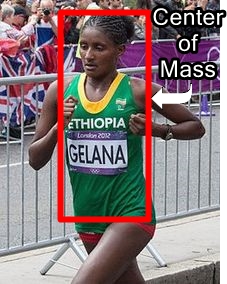

A more scientifically-correct definition of the center mass is:
- The center of mass is an imaginary point at which the total body mass is concentrated, and it is a general descriptor of whole body mass movement.
The position of your upper body during running significantly influences kinematics, mechanical work, impact production, metabolic energy expenditure whereby heel strike running and forefoot strike running involves different center of mass positions:
- Heel strike runners have a more posterior (backward; shown below) center mass position whereby the runner’s torso is kept farther behind initial foot strike position which was found to be a main source of stress because it results in excessive braking, compressive loading, and is ultimately why heel strike runners have the highest prevalence of every injury. These are the normal accompaniments of heel strike running as compared with forefoot running.
- Landing with a forefoot strike (shown below) causes the knee-joint to automatically bend at landing, which actually pulls the center mass slightly forward, thereby closing the distance between initial foot strike position and the center of mass. This plays a powerful part in both injury prevention and improved running economy because it increases forward momentum with less muscle effort, while fully preventing many impact forces and a number of physical stressors from reaching injury-predisposing levels.
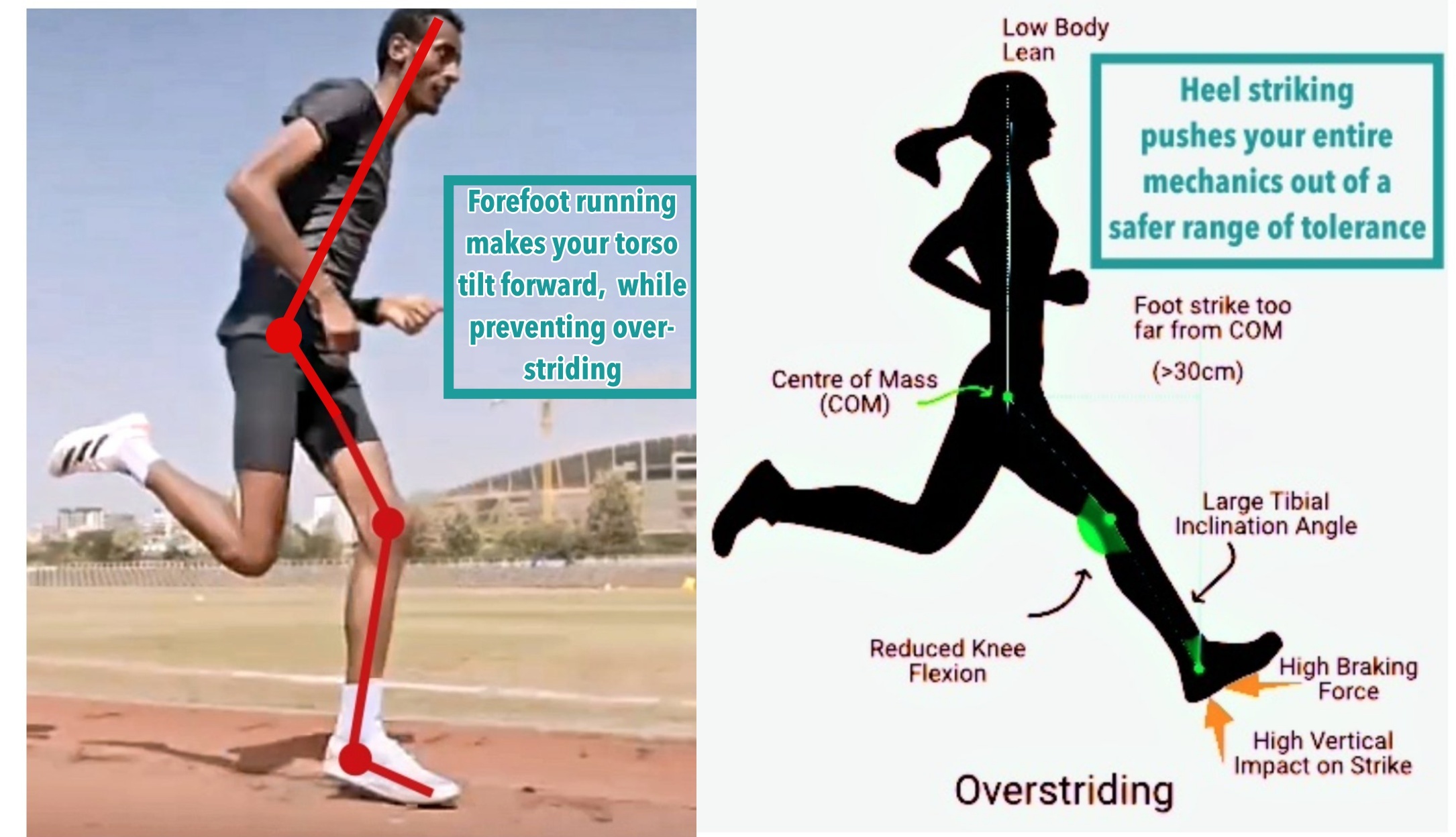
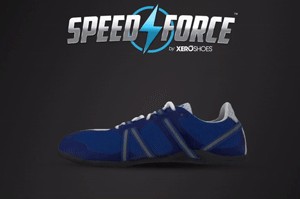
All in all, when it comes to the importance of foot strike in running, the research concludes that foot strike is fundamentally important because it controls the trajectory of your leg swing mechanics and upper body posture. Heel strike running does little to improve the positioning of your upper body, while misguiding the placement of your initial foot strike position, causing too much over-reach of the foot ahead of the body, producing a burst in collisional impact and braking (shown below) that underlies most injuries.
The biggest piece of proof that demonstrates foot strike is critical to running safely show that landing with a forefoot strike has a tremendous role to play in maintaining a safer and more functional alignment of your upper body and initial foot strike position, and is therefore, the most reliable way to help you manage your entire biomechanics. Need more convincing that forefoot running is better than heel strike running? Here are over 30 reasons why heel strike running is bad!
If you’ve enjoyed my post, you’ll LOVE my YouTube channel, here, where I show why forefoot running is better than heel strike running by every measure!

Or, you can support Run Forefoot by shopping at the BEST Barefoot Shoe Brands, and be sure to bookmark these links 🙂
Saguaro: https://www.saguaro.com/?ref=9bVA8fEkmDvB-I
Vibram FiveFingers: https://www.anrdoezrs.net/click-7600968-11372648
Vivobarefoot: https://amzn.to/3vycQOY
Be Lenka: https://www.dpbolvw.net/click-7600968-14330828
Xero Shoes: https://xeroshoes.com/go/Run_Forefoot
Iguaneye: https://www.iguaneye.com/?ref=8tfXVc92
Soft Star Shoes: https://shrsl.com/3mp1b
Wilding Shoes: https://bit.ly/3lIygQP
References:
Annoni et al. The effect of high-heeled shoes on overground gait kinematics in young healthy women. Sports Sci Health, 2014; 10:149-157.
Lormier, AV and Hume, PA. Achilles tendon injury risk factors associated with running. Sports Med, 2014; 44(10):1459-72.
Schuber, AG., Kempf, J and Heiderscheit, BC. Influence of stride frequency and length on running mechanics: a systematic review. Sports Health, 2014; 6(3):210-18.
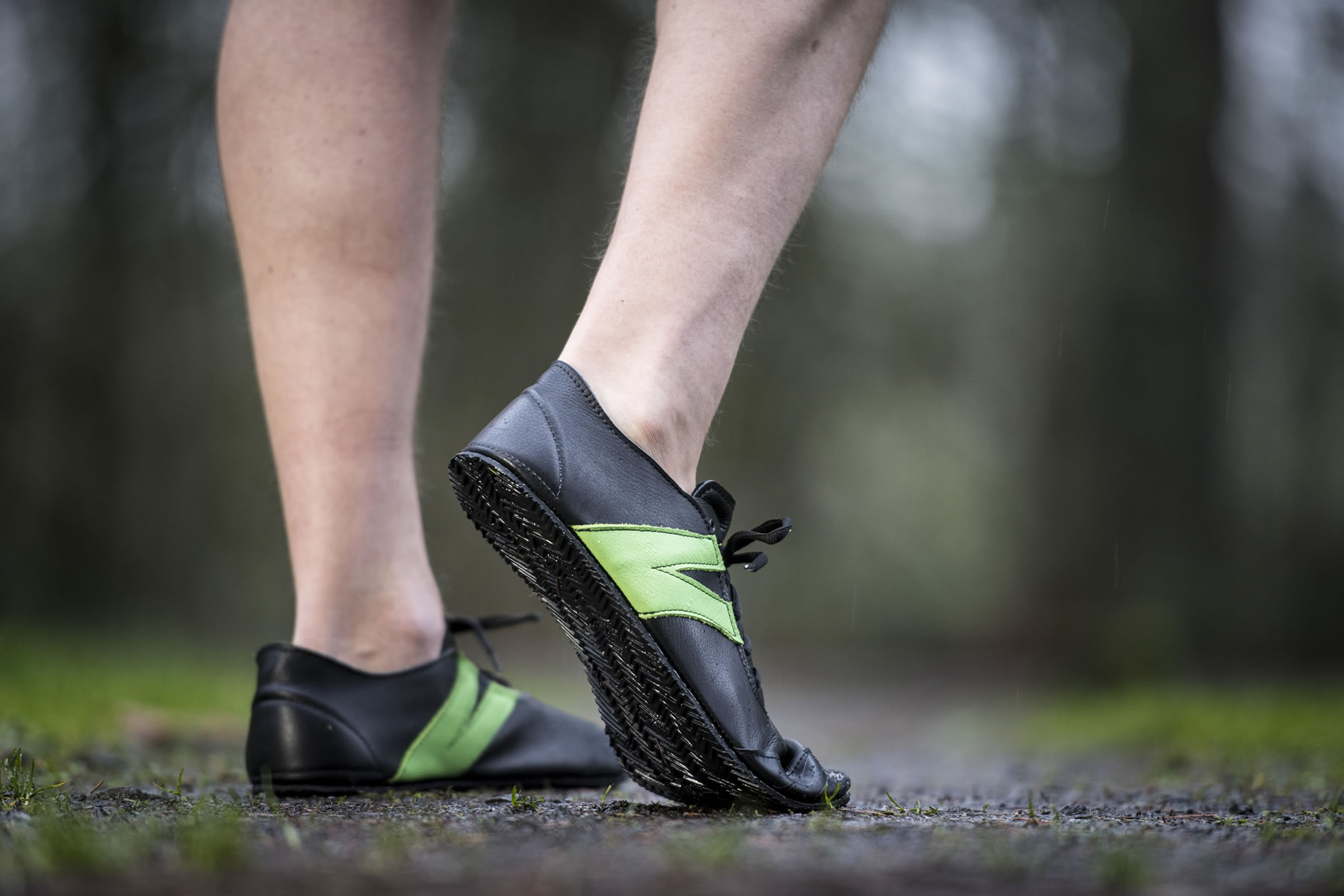
Bretta Riches
BSc Neurobiology; MSc Biomechanics candidate, ultra minimalist runner & founder of RunForefoot. I was a heel striker, always injured. I was inspired by the great Tirunesh Dibaba to try forefoot running. Now, I'm injury free. This is why I launched Run Forefoot, to advocate the health & performance benefits of forefoot running and to raise awareness on the dangers of heel striking, because the world needs to know.
Latest posts by Bretta Riches (see all)
- Can You Run In Barefoot Shoes? Yes, But DON’T Heel Strike! - 21/07/2024
- Why Cushioned Running Shoes Are Really Bad for Your Feet - 19/07/2024
- Do Cushioned Running Shoes Cause Injuries? - 17/07/2024

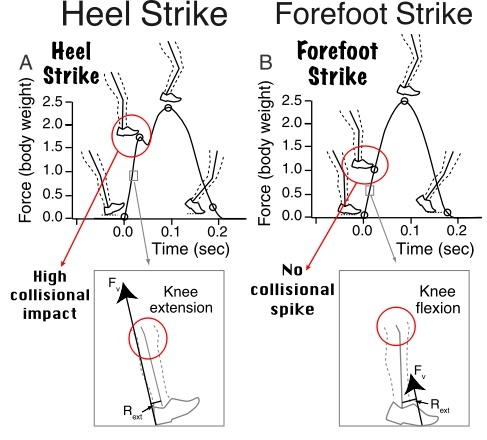
yjl7ii
8d0789
e7q85g
spgnad